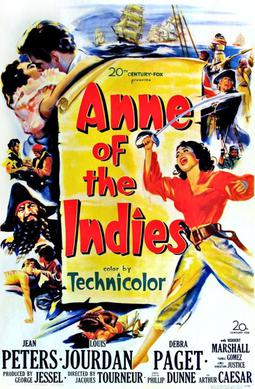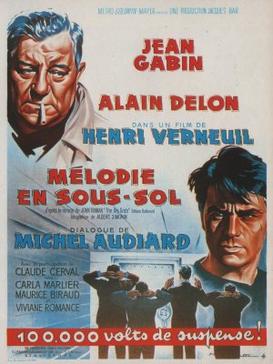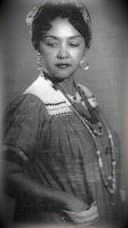
Madame Bovary, originally published as Madame Bovary: Provincial Manners, is a novel by French writer Gustave Flaubert, published in 1857. The eponymous character lives beyond her means in order to escape the banalities and emptiness of provincial life.
This article contains information about the literary events and publications of 1947.

Kenneth Lewis Roberts was an American writer of historical novels. He worked first as a journalist, becoming nationally known for his work with the Saturday Evening Post from 1919 to 1928, and then as a popular novelist. Born in Kennebunk, Maine, Roberts specialized in regionalist historical fiction, often writing about his native state and its terrain and also about other upper New England states and scenes. For example, the main characters in Arundel and Rabble in Arms are from Kennebunkport, the main character in Northwest Passage is from Kittery, Maine and has friends in Portsmouth, New Hampshire, and the main character in Oliver Wiswell is from Milton, Massachusetts.

Tyrone Edmund Power III was an American actor. From the 1930s to the 1950s, Power appeared in dozens of films, often in swashbuckler roles or romantic leads. His better-known films include Jesse James, The Mark of Zorro, Marie Antoinette, Blood and Sand, The Black Swan, Prince of Foxes, Witness for the Prosecution, The Black Rose, and Captain from Castile. Power's own favorite film among those in which he starred was Nightmare Alley.

Philip Ives Dunne was an American screenwriter, film director and producer, who worked prolifically from 1932 until 1965. He spent the majority of his career at 20th Century Fox. He crafted well regarded romantic and historical dramas, usually adapted from another medium. Dunne was a leading Screen Writers Guild organizer and was politically active during the "Hollywood Blacklist" episode of the 1940s–1950s. He is best known for the films How Green Was My Valley (1941), The Ghost and Mrs. Muir (1947), The Robe (1953) and The Agony and the Ecstasy (1965).

La Chinoise, ou plutôt à la Chinoise: un film en train de se faire, commonly referred to simply as La Chinoise, is a 1967 French political docufiction film written and directed by Jean-Luc Godard about a group of young Maoist activists in Paris.

Anne Francis was an American actress known for her ground-breaking roles in the science fiction film Forbidden Planet (1956) and the television action-drama series Honey West (1965–1966). Forbidden Planet marked a first in in-color, big-budget, science-fiction-themed motion pictures. Nine years later, Francis challenged female stereotypes in Honey West, in which she played a perky blonde private investigator who was as quick with body slams as with witty one-liners. She earned a Golden Globe Award and Emmy Award nomination for her performance.

The Left Hand of God is a 1955 American drama film. It was directed by Edward Dmytryk and produced by Buddy Adler, from a screenplay by Alfred Hayes, based on the novel The Left Hand of God, by William Edmund Barrett.

Golden Earrings is a 1947 American romantic spy film made by Paramount Pictures and starring Ray Milland and Marlene Dietrich. It was directed by Mitchell Leisen and produced by Harry Tugend from a screenplay by Frank Butler, Helen Deutsch and Abraham Polonsky, based on a novel by Jolán Földes. Unlike the novel, the film has a happy ending, with Lydia and the officer reuniting after the war. The music score was by Victor Young and the cinematography by Daniel L. Fapp.

Anne of the Indies is a 1951 Technicolor adventure film made by 20th Century Fox. It was directed by Jacques Tourneur and produced by George Jessel.

Valley of the Dolls is a 1967 American drama film directed by Mark Robson and produced by David Weisbart, based on Jacqueline Susann's 1966 novel. The film stars Barbara Parkins, Patty Duke, and Sharon Tate as three young women who become friends as they struggle to forge careers in the entertainment industry. As their careers take different paths, all three descend into barbiturate addiction. Susan Hayward, Paul Burke, and Lee Grant co-star.

Anne Boleyn, the second wife of King Henry VIII of England, and Queen of England from 1533 until she was beheaded in 1536 for treason, has inspired or been mentioned in many artistic and cultural works. The following lists cover various media, enduring works of high art, and recent representations in popular culture, film and fiction. The entries represent portrayals that a reader has a reasonable chance of encountering, rather than a complete catalogue.

Caravan is a 1946 British black-and-white drama film directed by Arthur Crabtree. It was one of the Gainsborough melodramas and is based on the 1942 novel Caravan by Eleanor Smith.

Lydia Bailey is a 1952 American historical adventure film directed by Jean Negulesco and starring Dale Robertson, Anne Francis and Charles Korvin. It was made by 20th Century Fox and based on the 1947 novel of the same name by Kenneth Roberts.

Any Number Can Win is a 1963 French crime drama film directed by Henri Verneuil. The film is based on the novel The Big Grab by Zekial Marko.
Frédéric Adolphe Cavens was a Belgian-born fencing master who emigrated to Hollywood and worked as an actor, stuntman and fencing master from the silent film era, then in television. He trained Jean Peters in the film Anne of the Indies (1951) and Guy Williams in the television role of Zorro.

Lina Mathon-Blanchet was a Haitian pianist, music teacher and composer. First director of the Conservatoire National, she was interested in Haiti's folkloric traditions and was one of the first performers to include Vodou-influenced theatrical performances on the public stage in the country. Founding several folkloric troupes, she led her artists on tours throughout the United States and was noted as a teacher and mentor to many prominent Haitian performers. Trained in classical music traditions she collected traditional songs documenting the lyrics, melodies, and rhythms found as traditional themes in Haitian music. She is widely recognized as one of the most influential figures in the development of music in Haiti in the twentieth-century.

Suzette Harbin was an American actress and dancer.

Persuasion is a 2022 American historical romance film based on Jane Austen's 1817 novel of the same name. It was directed by Carrie Cracknell from a screenplay by Ron Bass and Alice Victoria Winslow. The film stars Dakota Johnson, Cosmo Jarvis, Nikki Amuka-Bird, Mia McKenna-Bruce, Richard E. Grant, and Henry Golding.

















